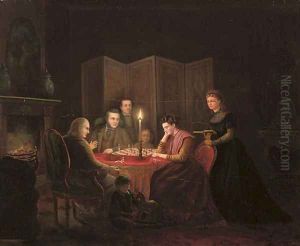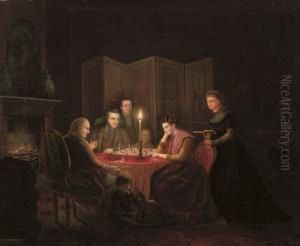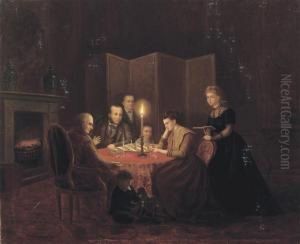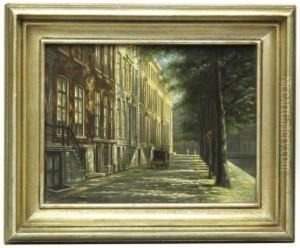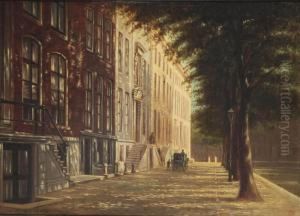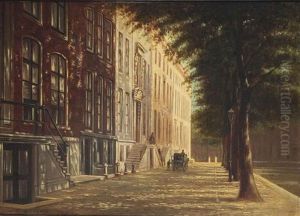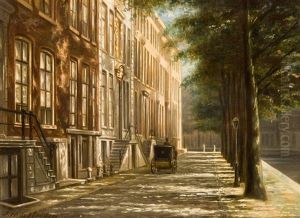Johannes Hermanus Van Heyden Paintings
Johannes Hermanus van Heyden, often referred to as Jan van der Heyden, was a Dutch Baroque-era painter, draughtsman, printmaker, and inventor. He was born on March 5, 1637, in Gorinchem, Netherlands, and died on September 28, 1712, in Amsterdam. Van der Heyden was particularly renowned for his detailed paintings of townscapes and architecture, imbued with a masterful use of light and reflection. He is often credited with significant contributions to the development of cityscape painting, being one of the first to focus on this genre as a subject in its own right.
Van der Heyden's family moved to Amsterdam when he was a young boy, where he later settled and worked. Despite his artistic career, he was also an inventor and engineer, and his innovations in street lighting led to improvements in the public infrastructure of Amsterdam and other cities. Additionally, he co-wrote and illustrated the first firefighting manual, detailing advanced fire hose designs that he developed, which significantly impacted firefighting techniques of the period.
His artistic career began in earnest in the 1650s, and he quickly gained a reputation for his meticulously detailed works. He often collaborated with other artists, such as Adriaen van de Velde and Eglon van der Neer, who would paint the figures in his compositions, while Van der Heyden himself focused on the architectural elements and landscapes. His paintings often featured the streets and buildings of Amsterdam, as well as views of other Dutch cities and occasionally imaginary landscapes.
Van der Heyden's works were highly sought after during his lifetime, collected by the aristocracy and wealthy patrons. He was also a member of the painter's guild and involved in local governance. After his death, his style influenced succeeding generations of cityscape painters throughout Europe. Today, his works can be found in major museums around the world, testifying to his enduring legacy in the history of Dutch art.
